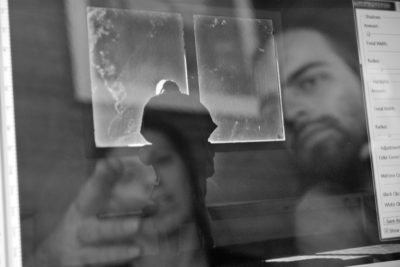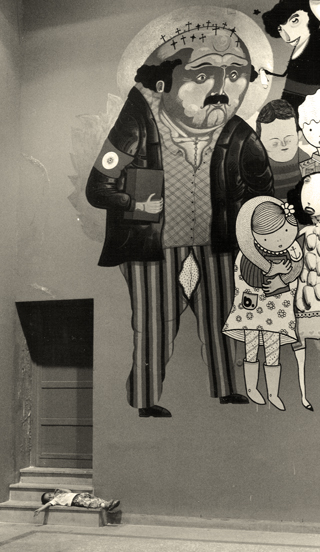
Psychodrama is a philosophy and a worldview about the development of the personality of the individual, it is a form of individual and group therapy based on the philosophy, methodology and work of psychiatrist J.L. Moreno.
It uses action and enactment in individual and group processes to help participants explore their inner world and their relationships with those around them.
Participants in a psychodramatic process have the opportunity, through enactment, to process what happens in everyday life, to heal wounds of the past and to discover how the old response mechanisms can work against them in the present.
This may help individuals reassess their old ways of functioning and think of new approaches for the future. Participants in a psychodramatic process can identify the correlation with the source of the problem and, by coping with it, be released from the past and be free to deal promptly and aptly with situations in the present, as this is ridden of other emotional burdens.
The therapeutic psychodramatic scene allows, hosts and contains contractions and expansions happening in people’s emotional time, on a conscious and unconscious level, to create the therapeutic moment. This means that even internalized images and perceptions about the world may come alive in the psychodrama scene and be associated with the individual’s consciousness and self-awareness, to develop creativity and expand personality.
In psychodrama, dramatization is less about acting than about children’s play, since it contains the essence of experimentation and rehearsal for life. It is a very natural way of sharing and experimentation, familiar to us all.
Spontaneity and Creativity – Fundamental Concepts in Psychodrama
Spontaneity and creativity are related concepts that lie at the heart of the theory and practice of psychodrama. Moreno defined spontaneity as a new response to an old situation or an adequate response to a new situation. Spontaneity is considered to be the catalyst of creativity. Creativity is the energy contained in the creative process, as it gradually takes shape. Spontaneity should not be confused with impulsiveness, since it is deemed to include the individual’s intention. Its key features are openness, and a fresh approach to and synthesis of intuitive, logical, emotional and intellectual functions.
The method

Each psychodrama session consists of three distinct phases: warm-up, action and sharing. Having ensured the basic rules and restrictions of confidentiality and respect, the “director” uses sociometric exercises, activation games and relaxation games to build trust within the group and gradually make group members feel more spontaneously. This phase is known as the group’s warm-up. Aside from being the initial phase of the psychodramatic process, the warm-up is a constant component of the entire session, leading to the creation of new roles and to the development of the personality of the individual.
Once the warm-up in the initial phase has achieved its goal, the process focuses on group members and their needs. The individuals in the group and the group as a whole will determine the scope of the work. Quite often several issues will arise, and members will highlight issues they wish to explore. The subject chosen through group dynamics will be the group’s dominant concern and the director, with the help of the group, will lead to its exploration.
The protagonist, who is the leading figure in the group, will express his/her subject and, through enactment, which is structured with the help of the director, will look for new responses mainly through spontaneity. Various scenes on the subject will unfold between the protagonist and the assistants, the “auxiliary egos”, who are members of the group and take up various roles as needed. Group members not directly involved in the action keep an attitude of active empathy during the psychodrama. The participation of the whole group in the psychodrama can function as an echo of the protagonist while stirring up several identifications among the rest of the members, depending on individual experiences.
The psychodrama is of great value not just for the protagonist, but also for the rest of the group’s members since, through the process, they recognize common elements in themselves and their lives, relate them to their own roles and are positively motivated towards their own development. After the “journey” of the protagonist has been completed, group members will share what the “resonance” of their own work awakened in them. This is a helpful context for both the protagonist and the members of the group, the common component for all being coexistence with their real truth.
Once the participants have acknowledged this association and faced the source of their malfunction, they can break free from the stereotypical responses of the past and their respective emotional burden and feel free to promptly and aptly cope with situations in the present. This last scene of the psychodrama session is called “role training scene”. The role training scene offers the protagonist the opportunity to try out new responses, without the fear of failure or error. The individual develops a new functional role and feels more capable of coping with the present and the challenges of life.